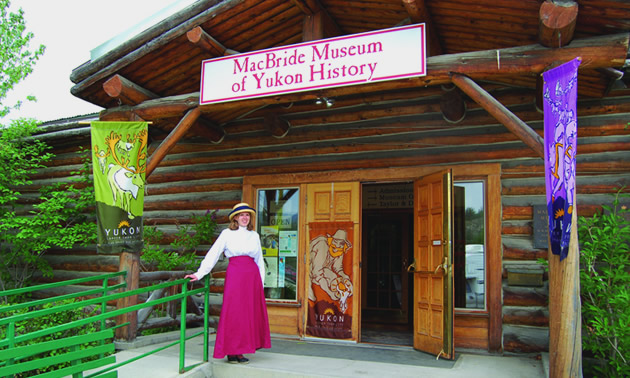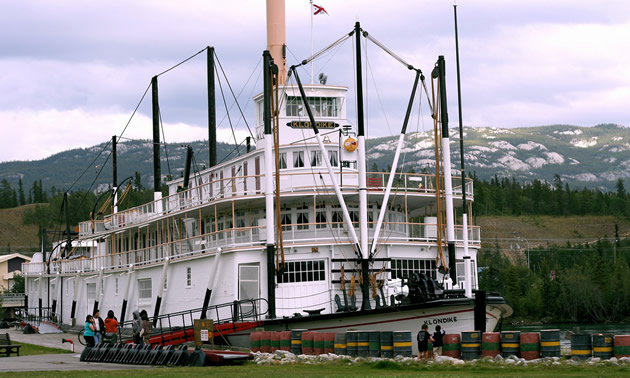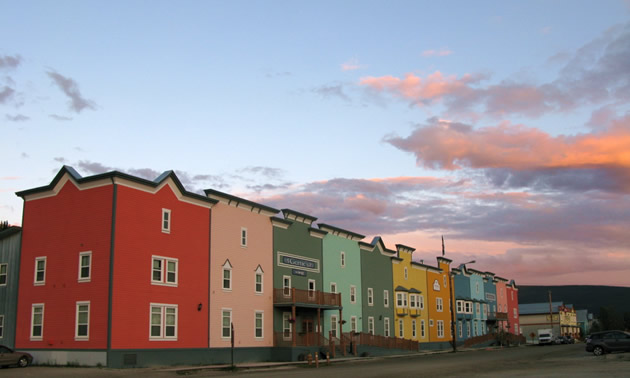Top four historical towns to schedule into your Yukon Territory road trip
The Yukon Territory historical towns offer a peek into the foundation of Canada’s westernmost frontier.

Historic sites in the Yukon Territory are representative of the communities that have shaped the area. Many of these sites were built in response to the Klondike Gold Rush of the early 1900s.
Beautiful views along the highway complement historical sites in Yukon’s small towns. We couldn’t pick one destination, so we’ve outlined a looped road trip around Yukon featuring historic sites along the way.
Whitehorse
Whitehorse was not officially incorporated as a city until 1950, but its history is rooted in the Klondike Gold Rush and in the First Nations before that. The area was a transportation hub for immigrants looking for gold.
A handful of historic sites still stand in Whitehorse. One of the most recognized is the S.S. Klondike, first launched in May 1937. The S.S. Klondike shuttled miners and their families to Dawson, along with food and fuel. Returning from Dawson, the ship was filled with silver-lead ore. Public tours are available.

Whitehorse’s role as a hub for the area and its status as the capital city of Yukon mean its historical sites are worth more than a single day’s visit. Check out the old houses, log church and railway depot while walking around town. To see the city’s history summarized under one roof, visit the MacBride Museum of Yukon History.
Beaver Creek
Head northwest on Yukon 1 West from Whitehorse for about five hours to stop next in Beaver Creek, adjacent to the Alaskan border. Beaver Creek RV Park and Motel lets travellers kick their feet up while surrounded by Yukon’s natural beauty in Canada’s westernmost community.
The main RV Park was built in 1986 and the motel in 1956. The property, formerly known as the Westmark Inn, grew over the years, passing in 2014 to the current owners, Beat and Jyl Ledergerber. Both have ties to the hotel’s history, but Beat is the town historian, with 56 years living and working multiple jobs in the area under his belt.
The town and the motel were first founded for practical reasons. “It used to be a halfway point for travellers between Whitehorse and Fairbanks, Alaska,” Beat said. “Before that, this was the meeting point when they built the highway.” He laughed that Beaver Creek is where the bulldozers collided, signalling the completion of the road.
Beaver Creek is still a popular destination, especially for travellers continuing into Alaska. To capture the town’s history of travellers, the RV Park and Motel has repurposed older buildings. For example, the old customs building from the border is now located on the park property, serving as the RV station.
The natural history of Beaver Creek is another draw for travellers. “The scenery is spectacular,” said Jyl. The fishing, ATVing and hiking keep visitors entertained throughout their stay in the close knit community. “There’s a lot of things that make Beaver Creek great, but you don’t see them if you’re just passing through. You have to come and spend the time,” she said.
Schedule your stay in Beaver Creek.
Dawson City
Continue on the Yukon 1 West across the Alaskan border, then gradually loop back to the border in the north. The Yukon 9 South brings travellers across the Yukon River by ferry to arrive in Dawson.
The Klondike Gold Rush led to the foundation of Yukon, and hence the Dawson City Telegraph Office. With the arrival of thousands of immigrants chasing gold, the signal of the presence of the Canadian government is represented by buildings like the Telegraph Office. The development of the Dawson-Ashcroft Telegraphy Line shows the government’s confidence in the newfound Dawson City, which was Yukon’s first capital city. After 1908, however, the Telegraph Office was converted into a private residence.
Learn more about the Dawson City Telegraph Office.

Mayo
For the next stop on our historical tour, take the Yukon 2 South for just over three hours to arrive in Mayo.
A simple log cabin, called the Mabel McIntyre House, served as the Mining Recorder’s Office in Mayo near the end of the Klondike Gold Rush. The Mining Recorder’s Office was a point of contact with the federal government to regulate mining operations on Crown land. This one-story rustic cabin is one of the oldest in Mayo, located in the historic downtown.
From 1946 to 1981, notable community member Mabel McIntyre lived here, giving the cabin its name. It was designated a historical site in December 2003.
Learn more about Mayo’s Mining Recorder Office.
From Mayo, travellers looking for a little more history before heading home can stop in Pelley Crossing, Yukon Crossing and Big Salmon before returning south to Whitehorse. South of Whitehorse is Carcross, home of the Carcross Desert and beautiful Bennett Lake.






